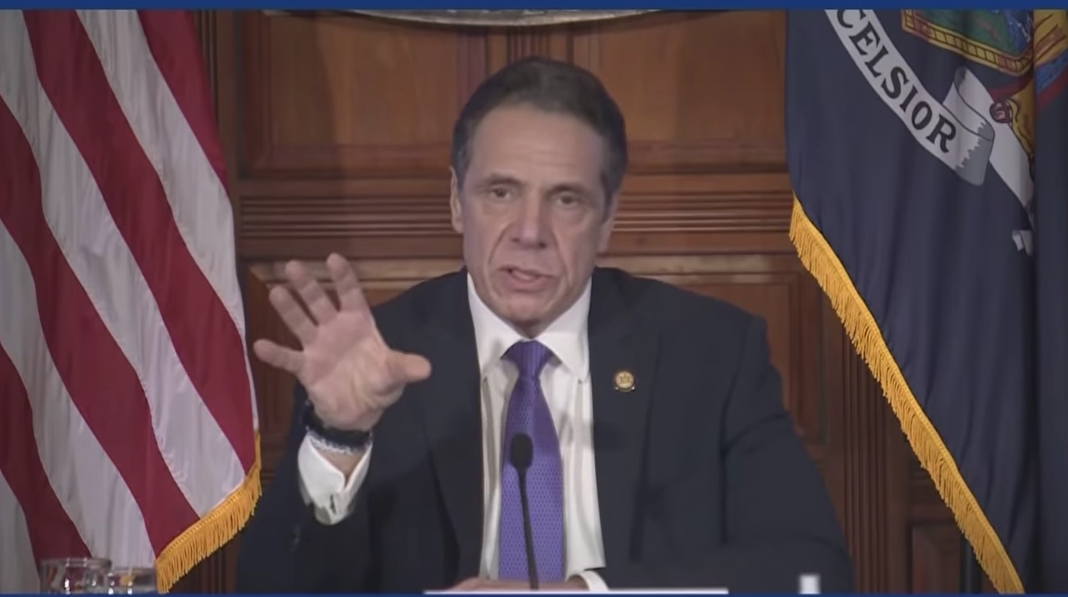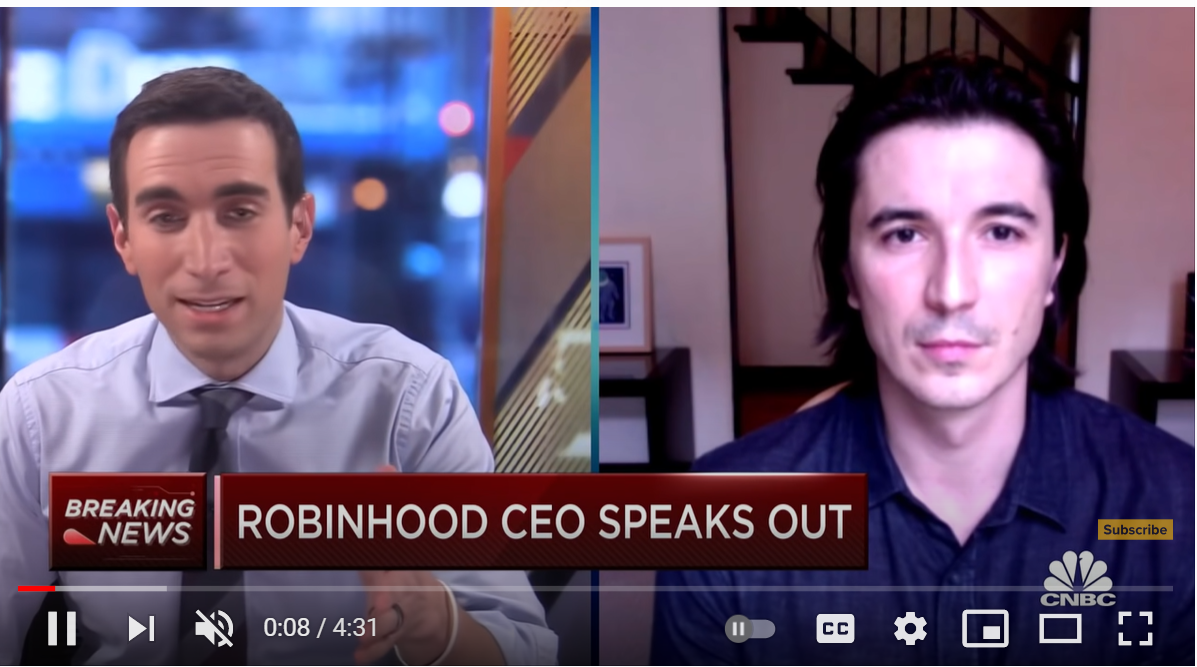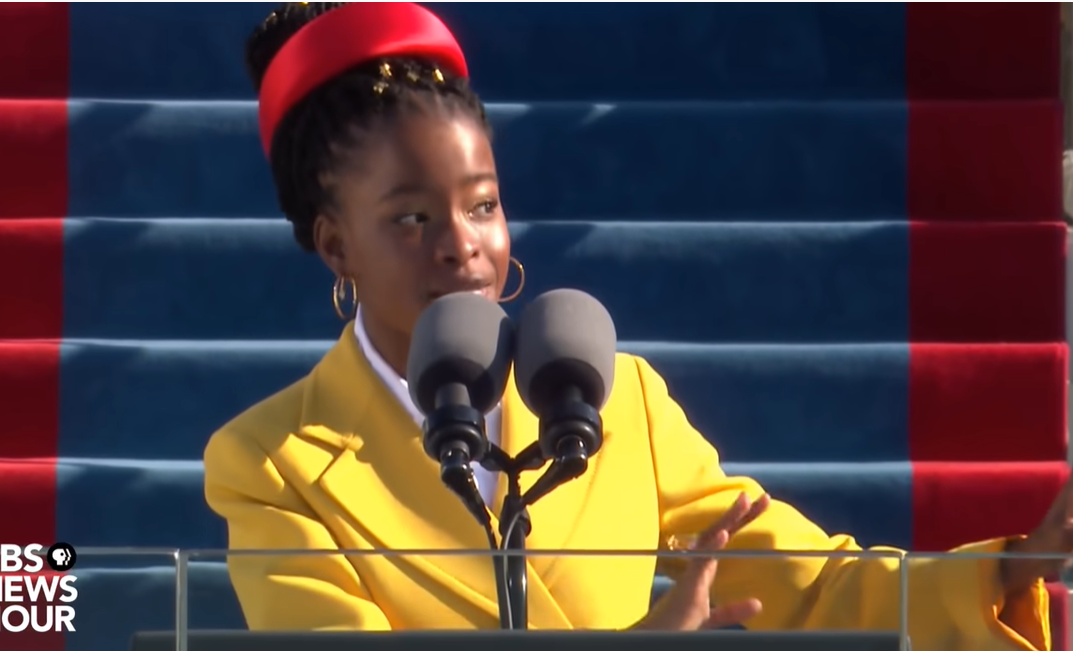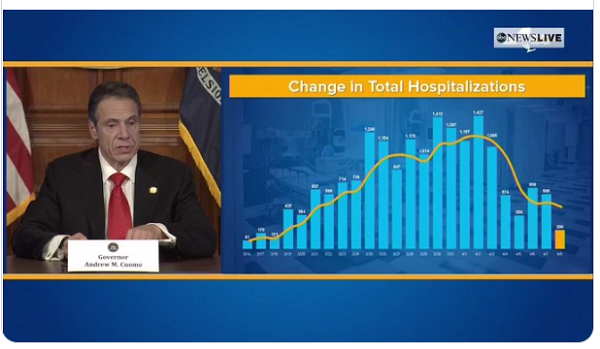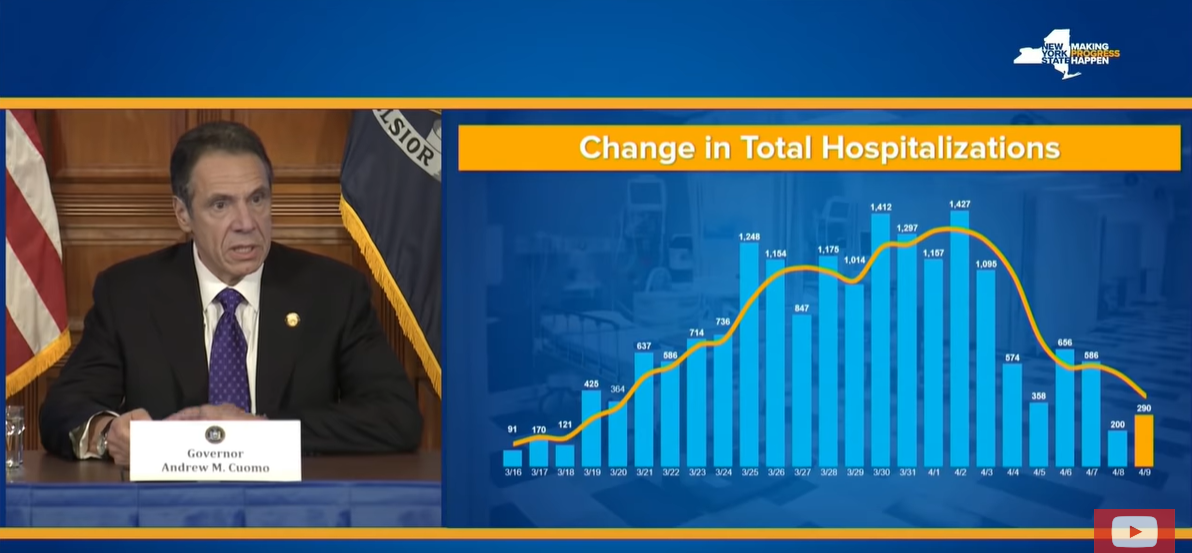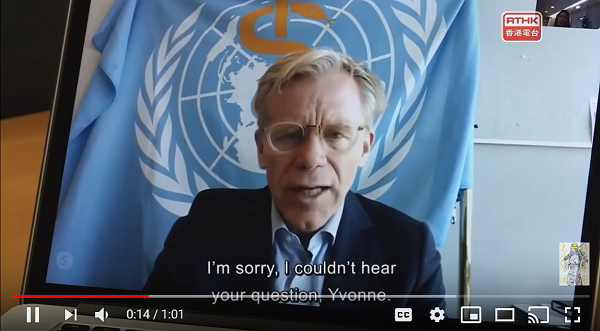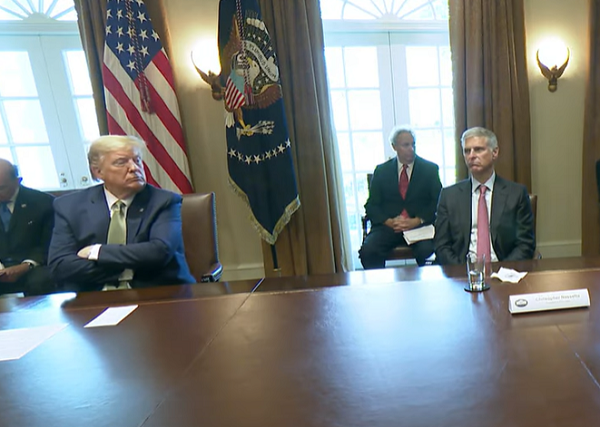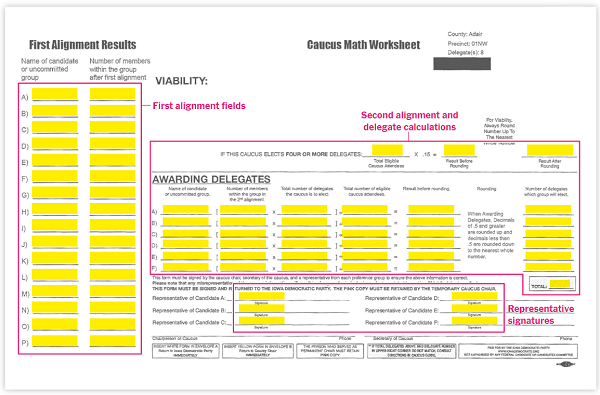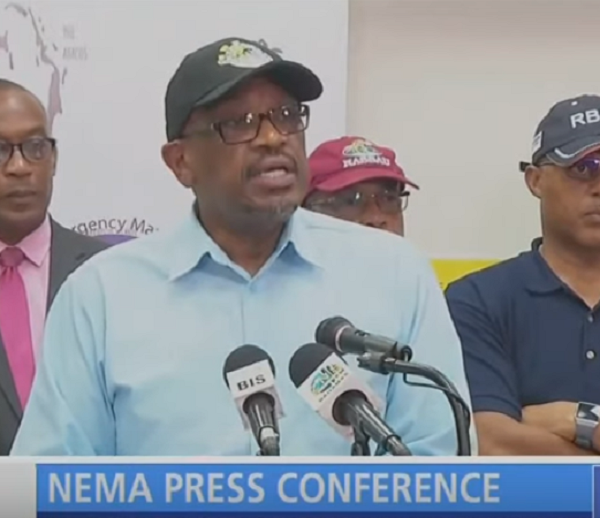Beware of Overtalking During Zoom Interviews
People seem to be talking too much during video interviews. A Chronicle of Higher Education article describes two possible reasons.
One is that job candidates want to build relationships and may overtalk in a somewhat desperate attempt to connect. After a year without intimacy, we might be overcompensating. I can imagine this applying to other types of meetings and presentations as well.
Second, visual cues are tough to see on video. The void isn’t quite as cavernous as during phone interviews, but still, it’s difficult to see subtle gestures. Imagine that an interviewer is leaning forward, changing a facial expression, or raising a hand slightly. These could be missed, particularly if a candidate is meeting with a group of people.
Next time you have an interview, try to pay attention to cues and allow people to interrupt you. You might also keep your answers a bit shorter—just in case. Allow time for follow-up questions.
Governor Cuomo Address Sexual Harassment Allegations
In a video statement, Governor Andrew Cuomo addressed sexual harassment allegations made by three women. He begins well, explaining his decision to speak directly to the public on the topic, although lawyers advised him to wait. To preserve his image, this is a good call: research shows that his apology is unlikely to negatively affect lawsuit outcomes—and may even have a positive effect.
But his apology goes awry. He uses language that is classic in non-apologies, for example, “It was not my intention” and “I certainly never meant to….” In sexual harassment law, intent does not matter—only the impact. Further, this type of language typically doesn’t land well. People don’t care. Instead, he should focus on the impact on these women and perhaps on the office.
He also says, “I now understand that I acted in a way that made people feel uncomfortable.” This is problematic because first, as he says at the beginning, he is a lawyer. As a lawyer and as a political leader, he should know better. Such language is reminiscent of “I’m sorry if you were offended,” implying that it’s the receiver’s problem. A couple of days earlier, after the second allegation, the governor said, “To the extent anyone felt that way, I am truly sorry about that.”
To his credit, he says, “I apologize” and “I’m sorry,” which people do want to hear in these types of statements.
We will see what results from these allegations, in the midst of calls for his resignation. Governor Cuomo also is embroiled in charges that he lied about the number of Covid deaths in nursing homes. So far, he says that he will not resign.
McKinsey Pays Settlement for Work with Purdue Pharma
Management consulting company McKinsey will pay almost $600 million to settle several lawsuits over its role in the opioid crisis, including offering marketing advice to Purdue Pharma. The largest settlement is for $573 million, which Massachusetts Attorney General Maura Healey describes in a video.
Healey’s presentation and delivery are interesting because she represents families and is speaking for 47 attorneys general in several U.S. states. Her anger is evident, but her audience is small: only 53 views one week after it’s posted, and at least three of those are me. What are the communication objectives? This will make a good class discussion.
McKinsey’s response is also interesting for students studying business communication and character. In an email to staff, Global Managing Partner Kevin Sneader describes “setting a higher standard.” Whereas the governors consider McKinsey’s actions unlawful, Sneader does not agree:
“Indeed, while our past work with opioid manufacturers was lawful and never intended to do harm, we have always held ourselves to a higher bar. We fell short of that bar. We did not adequately acknowledge the epidemic unfolding in our communities or the terrible impact of opioid misuse and addiction, and for that I am deeply sorry.”
The Massachusetts court filing explains the legal argument.
At some point in 2019, two McKinsey executives debated in emails “eliminating all our documents and emails.” These executives have been terminated. (See McKinsey communications.)
Rhetorical Devices in Super Bowl Ads
The Michelob ULTRA Super Bowl commercial demonstrates two rhetorical devices well. One is anaphora: “After the…., “After the…,” “After the…”
Chiasmus is also illustrated by “Are you happy because you win, or do you win because you’re happy?” This is an ABBA construction.
Rhetorical devices can be overused and hokey, but in ads they’re memorable, and these are good examples.
Robinhood CEO Defends Decision to Block Trading
It’s been a wild week of investing in GameStop, AMC, and other companies, with amateur investors driving up prices. Investment app Robinhood decided to halt trading and was highly criticized. Robinhood was accused of not having enough liquidity to cover trades, succumbing to pressure from hedge funds, and trying to protect investors, yet interfering with their trading decisions and opportunities to gain high returns.
In a CNBC interview with Andrew Ross Sorkin, CEO Vlad Tenev defends the company’s decision to block trading. He denies the accusations but does mention the liquidity and responsibility. How clear is his explanation?
His video is a good one to analyze for his delivery skills and appearance. His skin and wall colors are rather pink, and although he sounds confident, he could move his upper body more to seem relaxed. Fillers signal a conversational style, which is appropriate here, but he overuses “um,” and I find it distracting.
Rhetorical Devices and More in Amanda Gorman's Inaugural Poem
Amanda Gorman, a highly accomplished young poet, gave a riveting presentation at President Joe Biden’s inauguration ceremony. Her precise, engaging delivery—gestures, eye contact, pacing, modulation, etc.—is a lesson for communication students planning business presentations.
The poem demonstrates an extraordinary number of rhetorical devices: alliteration, assonance, anaphora, metaphors, allusions, and more. Whether or not you agree with her remarks in “The Hill We Climb,” the poem has all the marks of a speech that engages the audience and brings them along on a journey.
Tech CEOs Testify Before Congress
CEOs of four major tech companies—Google, Facebook, Apple, and Amazon—answered U.S. lawmakers’ questions about potential abuses of power. Themes from both Democrats and Republicans included relationships with third-parties, social media monitoring, advertising, search results, and other potential antitrust moves.
The CEOs joined by video and started with an opening statement. After that, no one was spared tough questions. Sundar Pichai was grilled about search engine results and Google’s business in China. Mark Zuckerberg defended its acquisition strategy. Jeff Bezos responded to accusations of using vendors’ data to build competitive products. And Tim Cook, who received the fewest questions, defended practices for developers, including fees charged through the App Store.
Discussion:
Watch the CEOs’ opening statements. Which were the strongest and weakest? On what criteria do you base your analysis?
Which leadership character dimensions do the CEOs exhibit or fail to exhibit.
Assess the CEOs’ delivery skills. What differences and similarities do you notice?
Now assess the technology set-up: lighting, background, camera angle, eye contact, and so on. What lessons do you learn for your own video meetings?
Atlanta Mayor Speaks to Protests
Atlanta Mayor Keisha Lance Bottoms delivered a speech from the heart and from her experience. Mayor Bottoms speaks from her experience as an African-American mother and implores people to protest peacefully.
Discussion:
Analyze the mayor’s speech: audience, communication objectives, organization, tone, delivery style, and so on. What works well, and what could be improved?
In what ways does this speech demonstrate authenticity? How does the mayor’s identity play a role in her message and her delivery?
New Zealand PM's Conversational Style
In business communication courses, many faculty encourage their students to use a natural, conversational style—to avoid reading from a script or memorizing a speech. A natural style allows speakers to connect with their audience and to demonstrate authenticity.
New Zealand PM Jacinda Ardern posted a video to “check in with everyone.” She is in a sweatshirt and says she just put her toddler to bed. Ardern discuss COVID-19 progress and asks people not to be “disheartened” by numbers, which may lag isolating behaviors.
In early April, PM Ardern declared that the tooth fairy and Easter bunny are considered essential workers.
Discussion:
Ardern uses fillers when she speaks—in other videos even more so than this one. Is that a problem? Why or why not?
How do you perceive her natural style: refreshing, inappropriate, or something else?
How would her style be perceived if she were the president of the U.S.?
Airlines CEOs Criticize Boeing CEO's Prediction
During an interview on the “Today” show, Savannah Guthrie asked Boeing CEO David Calhoun whether a major U.S. airline might not survive because of the pandemic. Calhoun said, “Well, I don’t want to get too predictive on that subject, but yes, most likely. Something will happen when September comes around.” He also said that “we believe we will return to a growth rate similar to the past, but it might take us three, five years to get there.”
The response angered major airline executives, who are currently negotiating for federal assistance.
Another Boeing executive defended Calhoun’s statement:
“Some weren’t keen on his sobering assessment of industry challenges ahead, but others appreciated him telling it like it is. It’s in his nature to be frank.”
Discussion:
What’s your view of Calhoun’s comment? One view is that, during a global pandemic, executives might need to be particularly sensitive. Another view is that this is a time for honest, direct talk.
What are the potential implications of his comment? Should he have avoided it?
What the entire interview. How did Calhoun do overall? What are his communication objectives and key messages?
Governor Cuomo's Leadership
A Wall Street Journal article analyzes NY Governor Cuomo’s leadership during the coronavirus pandemic. Crisis communication experts conclude that, although he’s not a naturally gifted orator, he is doing what the public needs now.
People appreciate the governor’s focus on facts and his direct style as well as his discussions of emotion and his brother’s illness, which “humanize” him.
The article sites Cuomo’s current popularity: “Gov. Andrew Cuomo’s job-performance rating soared in March to its highest level ever, according to a poll conducted by the Siena College Research Institute.”
Performer Randy Rainbow produced a funny video, “ANDY!” to the tune of “Sandy” from the musical Grease about his appreciation.
Discussion:
Read the article for other conclusions about the governor’s leadership style. With which ideas do you agree and disagree?
What other examples have you seen of people stepping up when the situation required them to be leaders? How did they do?
Misleading NY Covid-19 Chart
Thanks to Carl Quintanilla for posting this example of a misleading chart. New York Governor Andrew Cuomo has been lauded for his leadership during the coronavirus crisis, yet critics say one of the mainstay charts in his news conferences shows a skewed story.
When he shows this chart, Governor Cuomo describes, the decreasing numbers of new hospitalizations. The chart title is clear: “Change in Total Hospitalizations.” But what does the visual imply?
Similarly, he shows “Change in ICU Admissions” (approx.00:35 in the video).
Discussion:
Watch the first minute of the news conference. Is he clear, or could he be clearer in his explanation?
What’s your view of the two charts? Are they misleading? What are the possible consequences of showing the data in a misleading way?
How, if at all, should these charts be changed?
WHO Official Bungles Interview
World Health Organization (WHO) senior adviser Bruce Alyward wanted to avoid a reporter’s question about Taiwan becoming a member of the organization. A video of the interview shows an awkward exchange, with Alyward remaining silent (but we still see him moving and hear sounds), saying “Sorry, I couldn’t hear your question,” asking the reporter to move onto another question, and then, finally, ending the call. During a follow-up call, Alyward refers to China and then abruptly ends the call.
Taiwan has had good success in controlling COVID-19, and the government claims to have warned the WHO back in December 2019 about the contagion.
As of today, Alyward’s name is removed from WHO’s website listing advisers to the organization.
Discussion:
What is a better way for Alyward to have handled the reporter’s question?
Why do you think the WHO ignored warnings from the Taiwanese government?
Tourism CEOs Meet with President Trump
President Trump invited CEOs of major tourism companies to discuss the COVID-19 response.
Hilton CEO Christopher Nassetta began by highlighting issues in the industry:
“Hilton’s been around 100 years -- we’ve never closed a hotel that wasn’t going to be demolished or rebuilding, The bulk of our hotels in the major cities are closing as we speak.”
Nassetta was also complimentary to President Trump and Vice President Pence and said that he wanted to protect employees. The president reassured him that they’ll be up and running soon, although both said the situation is currently a “disaster” “all over the world.”
Discussion:
How would you describe the purpose of this gathering? What are President Trump’s objectives?
Assess each of the CEOs during the meeting. How well did they represent their brand?
Governor Cuomo's Press Conference
In his second news conference about Coronavirus, New York Governor Andrew Cuomo announced new cases, provided resources, and answered questions.
Discussion:
Assess the news conference. What does Governor Cuomo do well, and what suggestions would you have for him to improve his communication?
What strategies for answering questions does the Governor demonstrate?
Apologies About the Iowa App
The New York Times published “everything that went wrong at the Iowa Caucases,” and it’s a long list about the app. The technology was untested and unfamiliar to volunteers, and connection problems prevented accurate data submission and reporting.
An opinion writer blamed “techno-utopianism and laziness” for the trouble: “The two fuel each other: The overarching belief that software will fix everything leads to slapdash engineering, procurement and deployment.”
Troy Price, the Iowa Democratic Party Chair, apologized for the “multiple reporting challenges.” He explains the decision to delay reporting to ensure “accuracy and integrity.”
The CEO of Shadow, the app company, also apologized:
“We sincerely regret the delay in the reporting of the results of last night's Iowa caucuses and the uncertainty it has caused to the candidates, their campaigns, and Democratic caucus-goers. As the Iowa Democratic Party has confirmed, the underlying data and collection process via Shadow's mobile caucus app was sound and accurate, but our process to transmit that caucus results data generated via the app to the IDP was not. Importantly, this issue did not affect the underlying caucus results data. We worked as quickly as possible overnight to resolve this issue, and the IDP has worked diligently to verify results. Shadow is an independent, for-profit technology company that contracted with the Iowa Democratic Party to build a caucus reporting mobile app, which was optional for local officials to use. The goal of the app was to ensure accuracy in a complex reporting process. We will apply the lessons learned in the future, and have already corrected the underlying technology issue. We take these issues very seriously, and are committed to improving and evolving to support the Democratic Party's goal of modernizing its election processes."
Discussion:
Analyze each of these apologies: the audiences, communication objectives, writing style, organization, delivery choice, etc. Each message has distinct purposes.
What works well in these statements, and what could be improved?
Boeing CEO Responds to Questions
This week, Boeing CEO Dennis Muilenburg answered lawmakers’ questions about the two Max 737 plane crashes in the past year. Facing families of deceased passengers, Muilenburg began his testimony with an apology:
“I’d like to begin by expressing my deepest sympathies to the families and loved ones of those who were lost in the Lion Air Flight 610 and Ethiopian Airlines Flight 302 accidents, including those who are here in the room today. I wanted to let you know, on behalf of myself and all of the men and women of Boeing, how deeply sorry I am. As we observe today the solemn anniversary of the loss of Lion Air Flight 610, please know that we carry the memory of these accidents, and of your loved ones, with us every day. They will never be forgotten, and these tragedies will continue to drive us to do everything we can to make our airplanes and our industry safer.”
One of the most tense moments was when Senator Ted Cruz questioned Muilenburg (see video). Muilenburg also faced criticism as he was leaving. The mother of a victim of the second crash responded to his invoking his Iowa farm background:
“Go back to Iowa. Do that.” She also said, “I don't feel like you understand. It's come to the point where you're not the person anymore to solve the situation."
Discussion:
Watch more of Muilenburg’s testimony. What are some examples of questions he addressed well, and how could he have done better?
How well does Muilenburg balance emotional appeals, logical arguments, and credibility in his testimony?
What leadership character dimensions are illustrated by this situation and by Muilenburg’s testimony?
Muilenburg’s interaction with the mother is a difficult situation for anyone to handle, and we can certainly understand her grief and anger. How would you have responded?
CNN reports:
“In response, Muilenburg said he respects her viewpoint. "But I want to tell you the way I was brought up. And I'm just being honest here about it. I learned from my father in Iowa ... when things happen on your watch you have to own them and you have to take responsibility for fixing them," he said.
NBA Tweetstorm
The NBA is thrust into a political quagmire after Houston Rockets general manager Daryl Morey tweeted in support of the Hong Kong protesters: '“Fight for Freedom. Stand with Hong Kong.” The tweet has since been deleted.
NBA Commissioner Adam Silver is dancing a line between protecting Morey’s free speech and staving off China’s backlash. Critics say the league is driven by profit instead of principle. He has tried to clarify his position:
“It is inevitable that people around the world — including from America and China — will have different viewpoints over different issues. It is not the role of the NBA to adjudicate those differences. However, the NBA will not put itself in a position of regulating what players, employees and team owners say or will not say on these issues. We simply could not operate that way.”
At this point, The Wall Street Journal reports better news:
“The situation appears to have de-escalated. After a week of blistering anti-NBA rhetoric in Chinese media, the government is signaling that it’s time to cool it, a message that includes the vitriol directed at the Rockets, according to one person familiar with the situation.”
But the Journal also acknowledges: “China’s love affair with the Rockets might not be the same again.”
Discussion:
Should Morey have avoided sending the tweet? Why or why not?
How do you assess the league’s response to the situation?
Analyze Silver’s news conference. What did he do well, and what could he have done differently?
Dorian News Conferences
Local officials are holding news conferences about the impact of Hurricane Dorian.
Miami Mayor Francis Suarez announced mostly good news for the city, but he also addresses the terrible impact on the Bahamas.
Bahamas Prime Minister Hubert Minnis announced worse news: five fatalities. Since then, the number has risen to 30.
Discussion:
Compare these two presentations, particularly the content and tone. What differences do you notice?
How effectively did each government official convey the news?
What leadership character dimensions did they demonstrate?
Facebook Announces Plans for Privacy
After several scandals and escalating criticism, Facebook CEO Mark Zuckerberg announced new products and several new features to move from public posting to private conversations. The new Facebook design focuses on groups instead of the newsfeed and adds interactivity, such as posting jobs. Some of these features, of course, compete with existing social platforms, such as LinkedIn.
In a post, Facebook described the focus of its two-day conference: “how we’re building a more privacy-focused social platform — giving people spaces where they can express themselves freely and feel connected to the people and communities that matter most.”
Communication, friends, and community are themes in the message. Zuckerberg’s keynote is titled, “The Future Is Private.”
Discussion:
Assess Zuckerberg’s keynote. Who are his primary and secondary audiences? What are his communication objectives? To what extent does he meet them? How would you describe his delivery skills? Does he convince you that Facebook is addressing criticism? Do you think Facebook is moving in the right direction?
Zuckerberg opens his keynote by saying, “Privacy gives us the freedom to be ourselves.” How does this relate to concepts of authenticity? Do you agree with his conclusion?
Also assess the post announcing changes for Facebook and other apps. Which features or new products most and least excite you?



